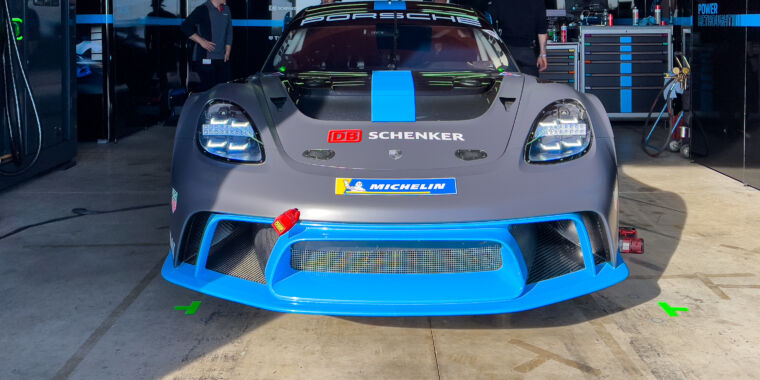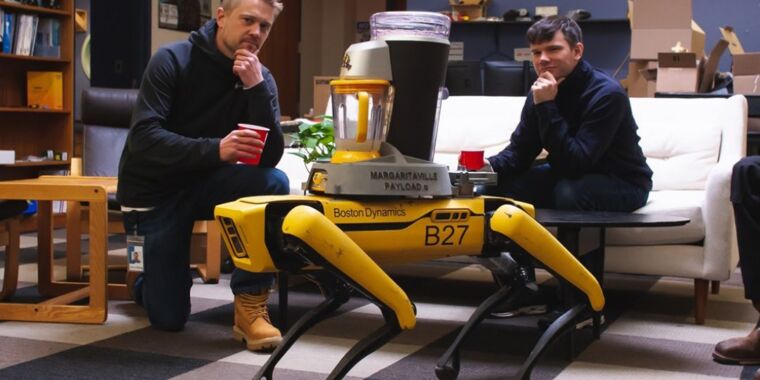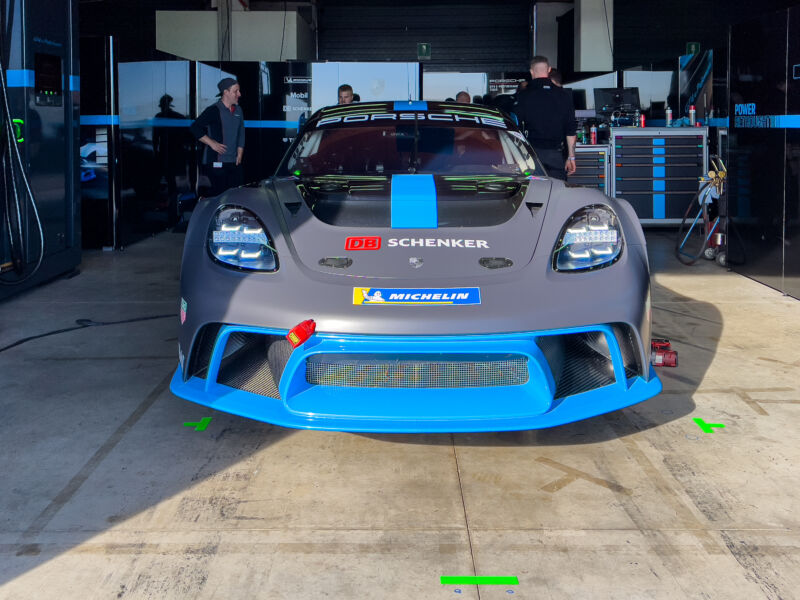
Jonathan Gitlin
FRANCIACORTA, ITALY—The auto industry is in the midst of a mass transformation as we move towards product lineups that are mostly or even entirely electric. Some are handling this transformation better than others, as supply chain problems caused by the pandemic and invasion of Ukraine add further complications. Witness the sorry state of Jaguar, which cancelled an electric replacement for the XJ sedan at the last minute, or the repeated electric vehicle-related missteps we’ve seen from Toyota, Honda, and Mazda of late.
There appear to be no such woes at Porsche, however. In 2019 it debuted the Taycan, a four-door electric sportscar that remains one of the best EVs on sale. Since then it’s added new Taycan variants, two different flavors of EV wagon included, all built in a factory in Zuffenhausen, Germany that’s already carbon-neutral. (Porsche’s Zuffenhausen factory uses a very heavy mix of renewable energy and biogas from waste materials, and has been independently certified by Germany’s DGNB.)
But Porsche isn’t resting on its laurels. Fine though the Taycan is, it really is just the start of the OEM’s electrified journey—as long as you aren’t counting some of Ferdinand Porsche’s very earliest vehicles, like the Egger-Lohner C2 Phaeton of 1898. Future battery EVs from Porsche will use an all-new flexible architecture called PPE—for premium platform electric—which the company is developing together with fellow VW Group sibling Audi (with Porsche taking the lead here).
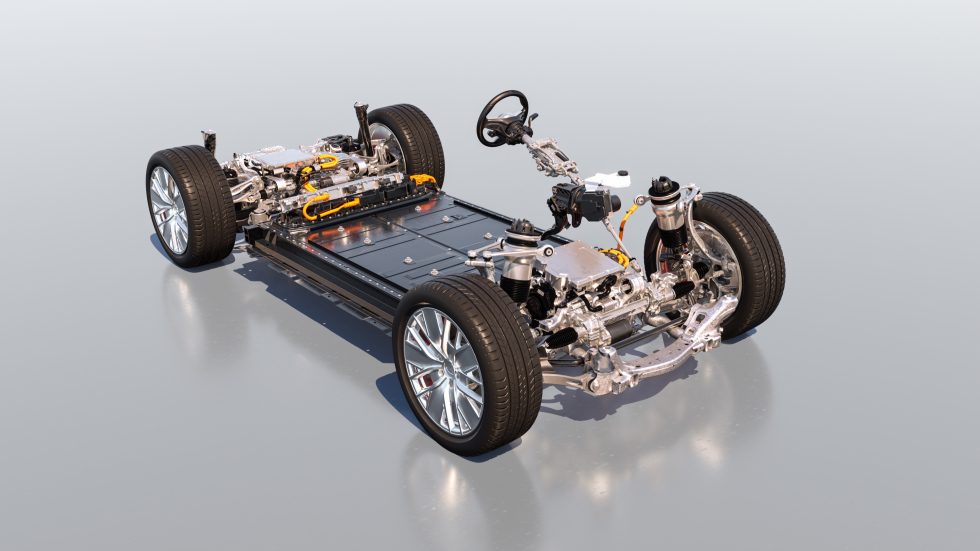
Porsche
The new platform is designed for rear- or all-wheel drive battery EVs, with power levels of up to 450 kW (604 hp) and 1000 Nm (738 lb-ft). The permanent synchronous motors are also developed on from the Taycan’s and use a new magnet arrangement as well as featuring better cooling. Notably, Porsche has moved to silicon carbide for the power electronics, which reduces switching losses and allows for higher switching frequencies.
The BEVs are built around a 100 kWh lithium ion battery pack, made up of 12 modules of prismatic cells and running at 800 V. This voltage allows for a high continuous power output so you can exploit the car’s performance without the battery derating, as well as enabling shorter and lighter wiring runs inside the BEV.
Long range and short recharging times are both development priorities for the PPE team, and Porsche told us the platform will charge at higher power draws than the 270 kW the Taycan can suck in. The target is 25 minutes to go from 10-80 percent state of charge. (The Taycan takes 22.5 minutes but its useable battery capacity is smaller at 83 kWh.)
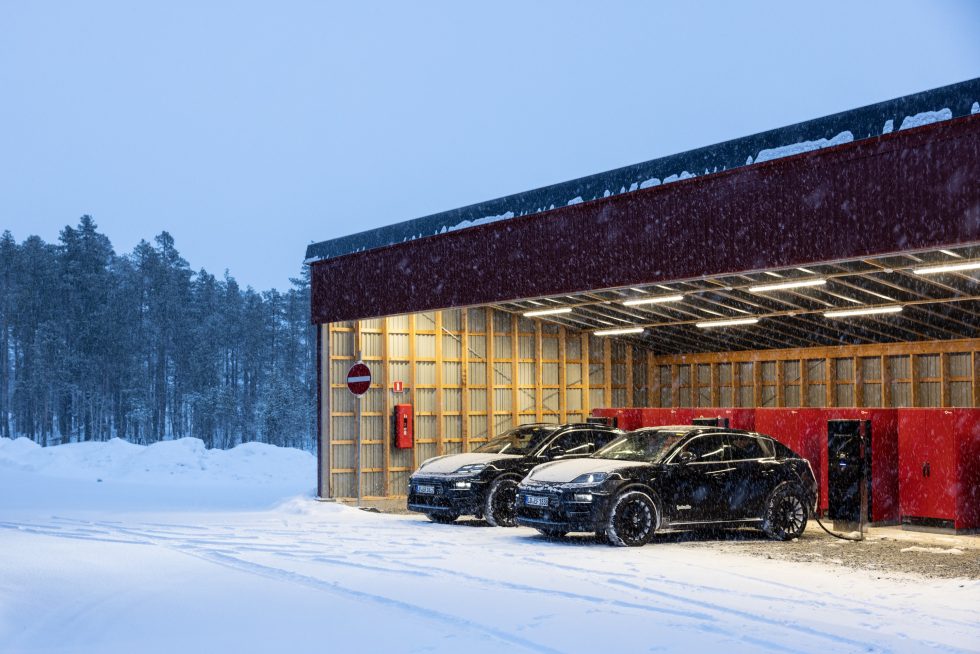
Porsche
Like Hyundai Motor Group’s E-GMP platform and the Hummer EV, PPE has a fast-charging battery voltage party trick that means it can use 400 V hardware without significant slowness. In this case, the battery splits itself into two 400 V packs, which Porsche says is more efficient than using the inverter as a DC-DC converter. (E-GMP EVs like the Hyundai Ioniq 5 use its inverter to change the voltage, and the Hummer EV normally runs at 400 V but can convert its battery to 800V to charge faster.)
Nestled in a corner of the briefing room sat a black, slightly scarred SUV, a prototype of the new Macan EV that goes on sale in 2023. Called Ludmilla, it’s one of a number of test mules that looks mostly like a current Macan—complete with ports of (non-existent) exhaust pipes on the rear bumper—but under the skin is packed full of PPE hardware.
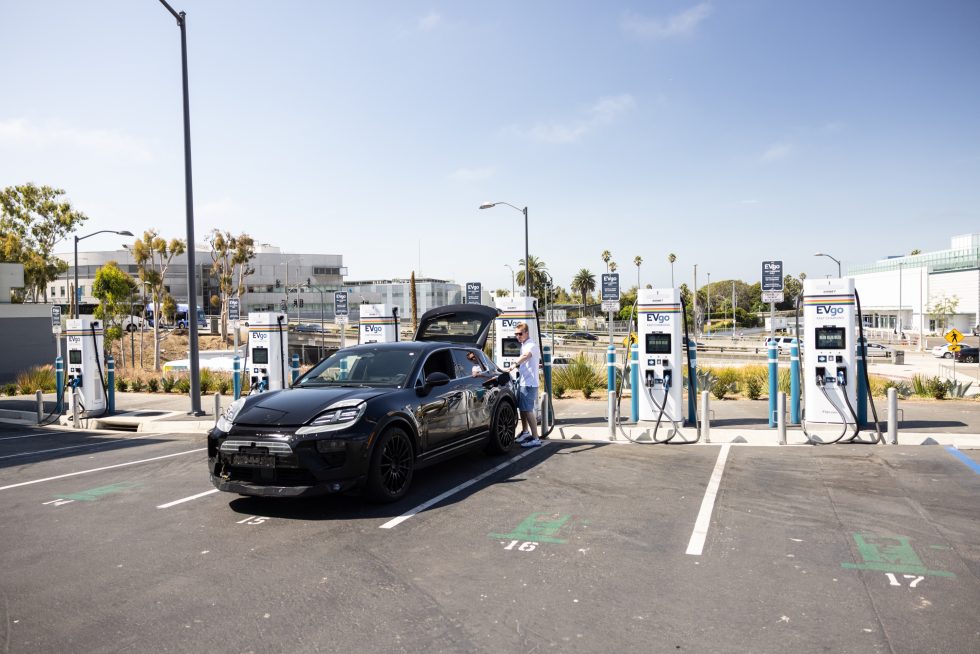
Porsche
Since a Porsche needs to be able to perform in more than just a straight line, the platform’s driving dynamics are also an area of development. Porsche has designed a new performance rear axle, which positions the rear electric motor behind the rear axle and which allows for dynamic torque distribution from one side to the other. The new Macan will also feature 5˚ degrees of rear-wheel steering for increased low-speed agility and high-speed stability, and there’s a new steering controller that Porsche says increases feedback from the road to the driver.
In fact, PPE is one of two advanced new EV platforms being developed at VW Group. There’s another new platform called SSP, or Scaleable Systems Platform, which Porsche will use for the next Cayenne SUV, but SSP is earlier in its development and isn’t expected until 2026.

